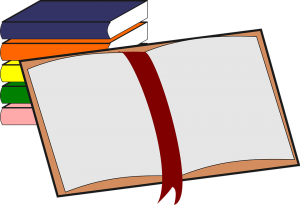
Baa, Baa, Black Sheep is apart of a collection of poems that date back to the early 1700’s and was officially published in 1744. The Rhyme uses a variant melody similar to that of Twinkle Twinkle Little Star and the Alphabet Song. Alongside the melody, the words haven’t changed for the most part in the last 284 years. This very popular and old rhyme’s backstory and meaning all correlate together; as was stated in the book “the Real Personages of Mother Goose,” that was published in 1930 by Katherine Elwes Thomas.
It is believed that the poem derives from a resentment of heavy wool taxation that was active from 1275 until the 1600’s. The ‘Black Sheep’ being the people who collect the taxes and the sheep being the Shepard including their wool supply. This rhyme was typically used to mock the taxation without punishment of harsh words.
Yankee Doodle
Yankee Doodle is one of the most popular nursery rhymes in the United States. It’s earliest renditions we know today date back before the American Revolution, but it is said that this rhyme dates back as far as the 15th century in Holland. Many thing this because many of the words used in the rhyme are both English and Dutch. Our modern day version of this rhyme were frequently used by British officers to mock the colonial militia in the revolutionary war. They considered the ‘Yankees‘ to be unorganized and unprofessional. When the colonists won the war and gained independence, they sang it patriotically to spite their defeated British counterparts.
Little Jack Horner
Little Jack Horner was published in 1725 by Henry Carey. It didn’t become popular until the late 18th century and unlike the previous poems, the lyrics have changed several times over by varying poets and authors. The most recent rendition of the rhyme we all know today was published on a chapbook in 1764. The motivation for Little Jack Horner’s creation was all inspired by acts of opportunism during the age.
Mary Had A Little Lamb
Mary Had A Little Lamb is a rhyme that is more directly based on a true specific story told by a poem. This story in particular is that of a well known woman, Mary Sawyer, who lived in Sterling, Massachusetts. Her house still stood until 2007, when it was tragically burned down.
The lyrics of the rhyme tell it’s entire backstory. Mary Sawyer kept a lamb as a pet and one day, she walked with this lamb to school. That same morning, there happen to be a visitor named John Roulstone, who was very pleased with the fact that Mary had brought this lamb to school with her. He was so excited by this, he came back the next day to give Mary a piece of paper that had the first three lines of the poem on it. Later, the next twelve lines would be composed by another poet, Sarah Josepga and was fully published in 1830 as a full poem.
The Muffin Man
The Muffin Man is another rhyme that has been around for almost 200 years now with no change made to the melody or the lyrics. The Muffin Man was created in Britain, but it quickly spread, especially in the United States. This expansion of popularity did not happen until sometime in the mid – late 19th century. The original is still preserved to this day in the Bodleian Library, located in the UK and is one of Oxford Universities main research sites.
Upon being released in 1820, the popular Rhyme was created from the everyday usual delivery of their fresh foods to people’s Victorian style households. Inside these common deliveries, held many treats, one being muffins. It was always exciting for the recipients of these deliveries and as a result, this playful rhyme was created. In the 19th century, The Muffin Man become very popular as it spread across the United States.